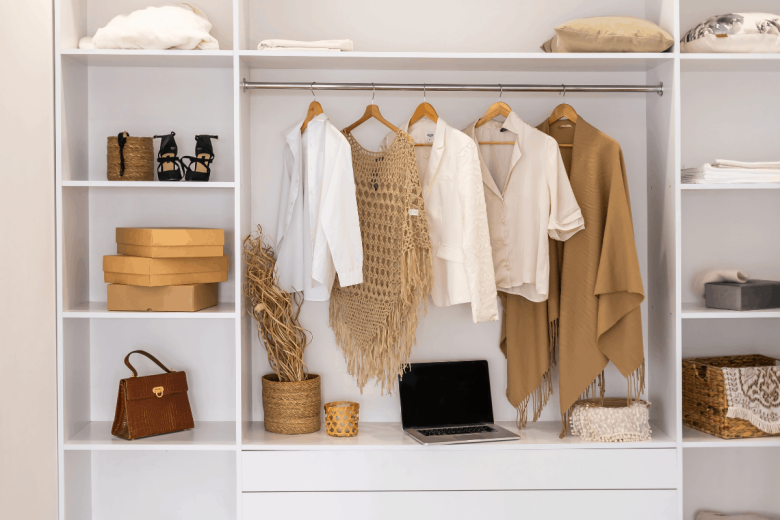How to create a capsule wardrobe for a minimalist lifestyle
Simplify Your Wardrobe: A Beginner’s Guide to Creating a Minimalist Capsule Wardrobe
In recent years, the concept of minimalism has gained a lot of popularity, especially when it comes to fashion. Creating a capsule wardrobe for a minimalist lifestyle can seem daunting, but with some careful planning and organization, it can be a fun and fulfilling process. The motive of a capsule wardrobe encourage having a limited number of high-quality, versatile pieces that can be mixed and matched to create a variety of outfits. The goal is to simplify your wardrobe and your life, and to reduce the impact of fast fashion on the environment.
In this article, we’ll explore the steps involved in creating a capsule wardrobe, including how to define your personal style, identify key pieces, choose complementary items, build your wardrobe, and maintain it over time.

Defining Your Personal Style
The initial thing in construct a capsule wardrobe is to know and show your personal style. Take some time to think about the types of clothing you feel most comfortable in and the colors and patterns that you’re drawn to. You can also look for inspiration online, in magazines, or in your own closet. The goal is to create a wardrobe that reflects your personal style and that you’ll feel confident wearing.
Identifying Key Pieces
The next step in creating a capsule wardrobe is to identify your key pieces. Think about the types of clothing you wear most often and what you need for your lifestyle. For example, if you work in a professional environment, you might need a few tailored pieces like a blazer, trousers, and a dress. If you’re more casual, you might focus on comfortable, versatile pieces like jeans, t-shirts, and sweaters.
When identifying your key pieces, it’s important to consider your body shape and what flatters your figure. Choose pieces that fit well and that you feel comfortable in. Don’t be afraid to try new styles, but also be mindful of what works best for you. Additionally, consider the quality of the pieces you choose. Invest in high-quality pieces that will last a long time and that you’ll enjoy wearing.
Choosing Complementary Items
Once you’ve identified your key pieces, it’s time to choose complementary items that can be mixed and matched with them. Look for items that can be dressed up or down and that work well with your key pieces. For example, a white blouse can be paired with jeans for a casual look or with a skirt for a more dressed-up look.
When choosing complementary items, consider the color scheme of your wardrobe. Choose items that work well with the colors you’ve chosen for your key pieces. Additionally, consider the seasonality of the items you choose. Look for pieces that can be worn year-round and that can be layered for warmth in cooler months.
Building Your Wardrobe
Once you’ve identified your key pieces and complementary items, it’s time to build your wardrobe. Look for high-quality items that will last a long time and that you love. Invest in pieces that you’ll wear often and that can be worn in multiple ways. For example, a versatile coat can be worn with jeans and sneakers or dressed up with a skirt and heels.
When building your wardrobe, consider the materials used in the clothing you choose. Look for sustainable and eco-friendly options whenever possible. Additionally, consider the fit of the clothing. Choose pieces that fit well and that flatter your figure.
Maintaining Your Capsule Wardrobe
Maintaining your capsule wardrobe is an ongoing process. As you wear your clothes, pay attention to which items you wear most often and which ones you rarely wear. If you find that you’re not wearing certain items, consider removing them from your capsule and donating or selling them. Additionally, as the seasons change, you may need to add or remove items from your capsule to accommodate the weather.
In conclusion, creating a capsule wardrobe is a great way to simplify your life, save money, and reduce the environmental impact of fast fashion. By defining your personal style, identifying your key pieces, choosing complementary items, and building your wardrobe with high-quality pieces, you can create a versatile wardrobe that you’ll love wearing for years to come.
Image Source : Emma







